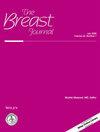Programmed Death Ligand 1 (PDL1) Expression in Neoadjuvant Triple-Negative Breast Cancer: Association With Chemotherapy Response and Residual Cancer Burden
Abstract
Background
Programmed death ligand 1 (PDL1) expression in tumors is linked to immune evasion in various cancers, making these patients potential candidates for PDL1 inhibitors. Although immune checkpoint blockade therapy has gained approval for breast cancer treatment, especially triple-negative breast cancer (TNBC), there is a lack of PDL1 expression data in Pakistani breast cancer patients. In our study, PDL1 expression was assessed in TNBC to determine eligibility for PDL1 inhibitors. Our study aimed to evaluate the frequency of PDL1 expression in TNBC. We also examined how PDL1 expression correlates with clinicopathological characteristics and prognostic factors in patients with TNBC. Moreover, the association of neoadjuvant chemotherapy response with PDL1 expression was also evaluated.
Methods
This cross-sectional study was conducted at the Liaquat National Hospital Histopathology Department from January 2022 to June 2023. A total of 128 biopsy-proven cases of TNBCs were administered neoadjuvant chemotherapy before surgery during this period. PDL1 immunohistochemical staining was performed on prechemotherapy needle biopsies. Expression was determined using the combined positive score (CPS). CPS is the number of PDL1-stained cells (tumor cells, lymphocytes, and macrophages) divided by the total number of viable tumor cells multiplied by 100. Cases with CPS ≥ 10 were considered PDL1-positive.
Results
Complete pathological response (pCR) was observed in 32.8% (n = 42) of cases. PDL1 expression was observed in 18.8% (n = 24) of cases. The majority of cases showed a high residual cancer burden (RCB-III) (n = 53, 41.4%). A significant association was noted between PDL1 expression and neoadjuvant chemotherapy response (p < 0.01). PDL1-positive cases had a higher pCR (n = 16, 66.7%) than PDL1-negative cases (n = 26, 25%). PDL1-positive cases showed a lower frequency of RCB-II-III (RCB-II: 8.3%; RCB-III: 0%) than PDL1-negative cases (RCB-II: 25%; RCB-III: 51%), with a significant p value (p < 0.01).
Conclusion
Overall, PDL1 expression was low in TNBC cases in our study; however, identifying these cases is important to identify those that can benefit from immunotherapy. We found a significant association of PDL1 expression with neoadjuvant chemotherapy response and RCB. Moreover, PDL1 positivity was associated with lower Ki67 index and older age. Therefore, we recommend routine PDL1 testing in all cases of TNBC to predict neoadjuvant chemotherapy response.


 求助内容:
求助内容: 应助结果提醒方式:
应助结果提醒方式:


